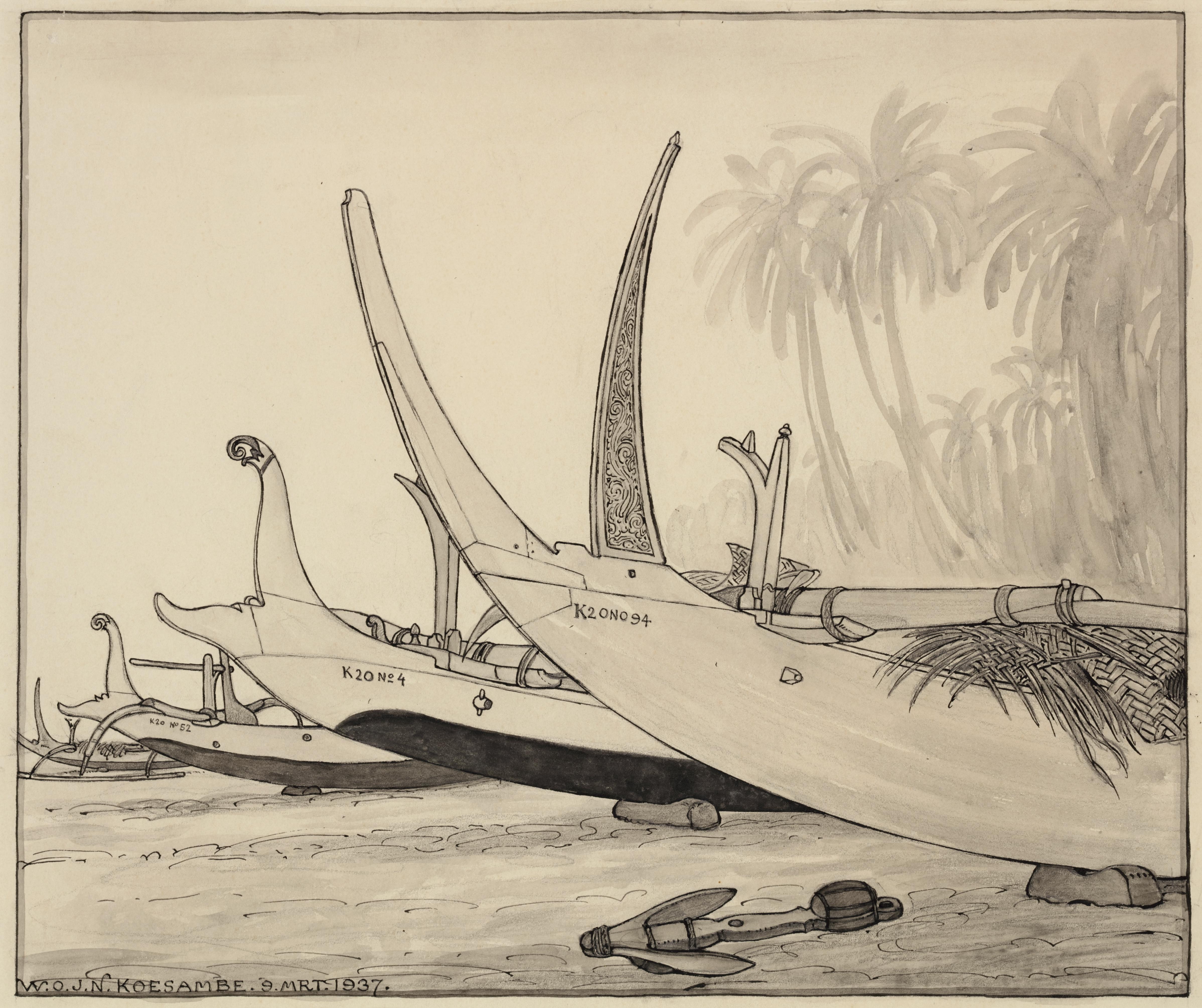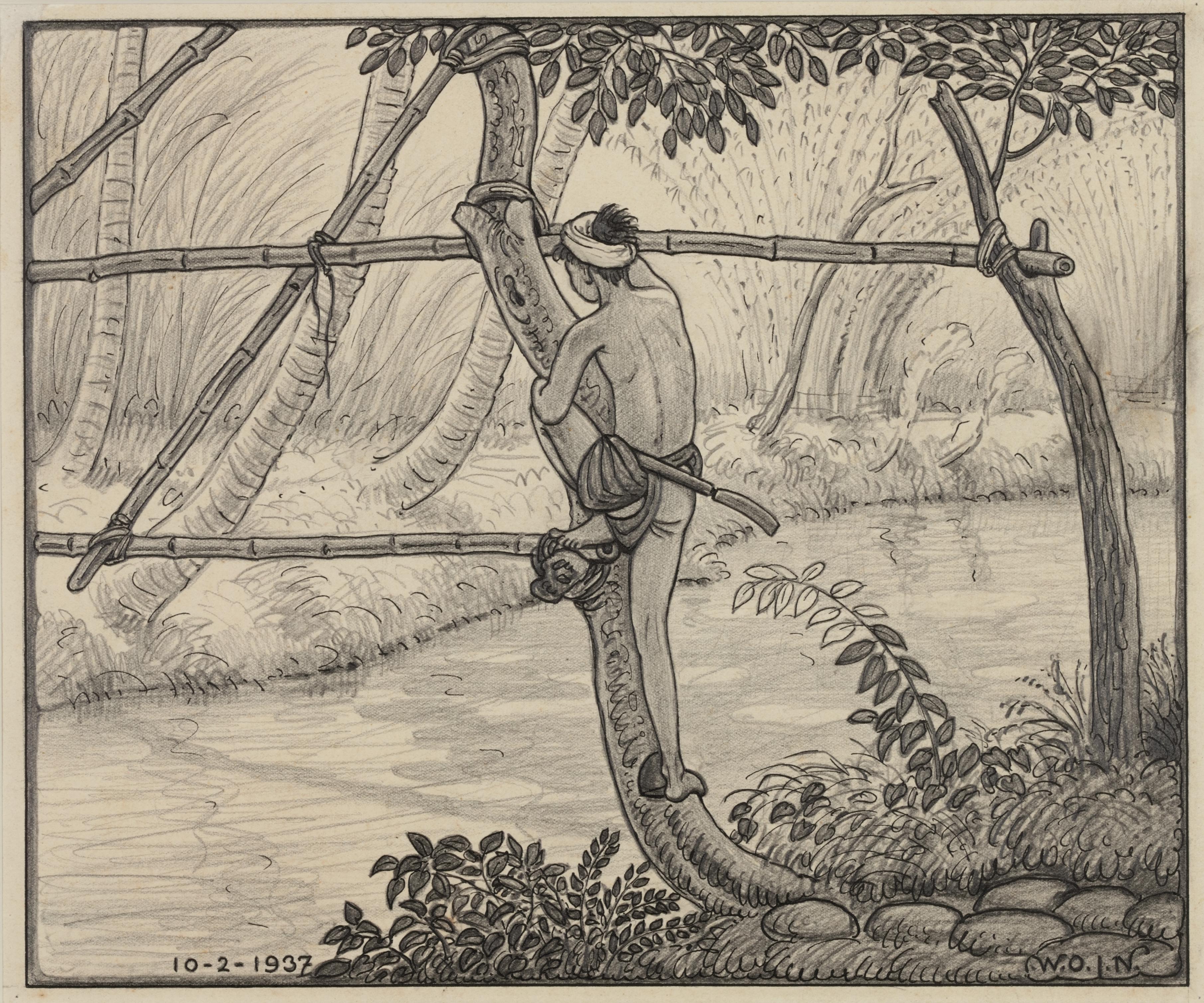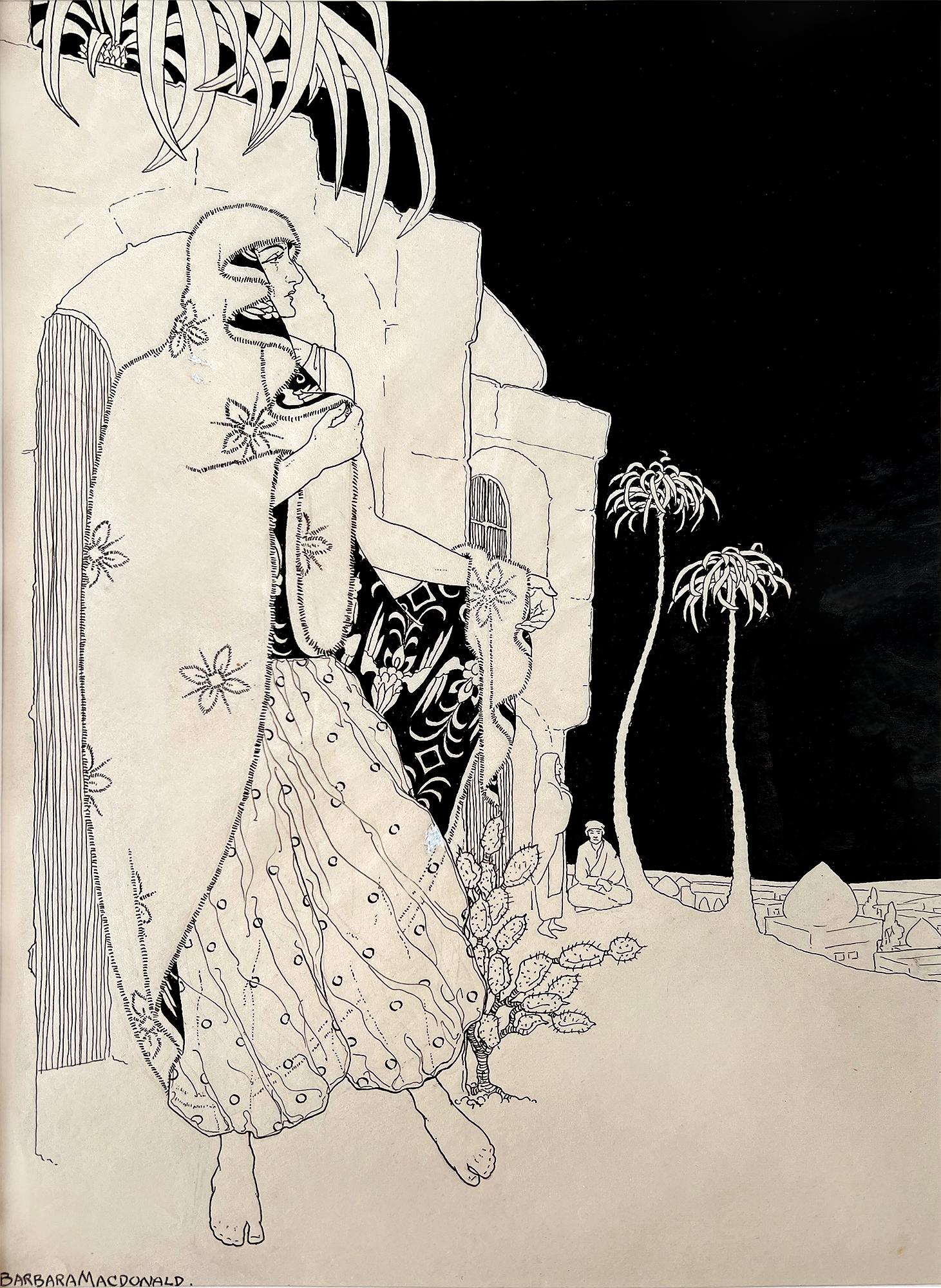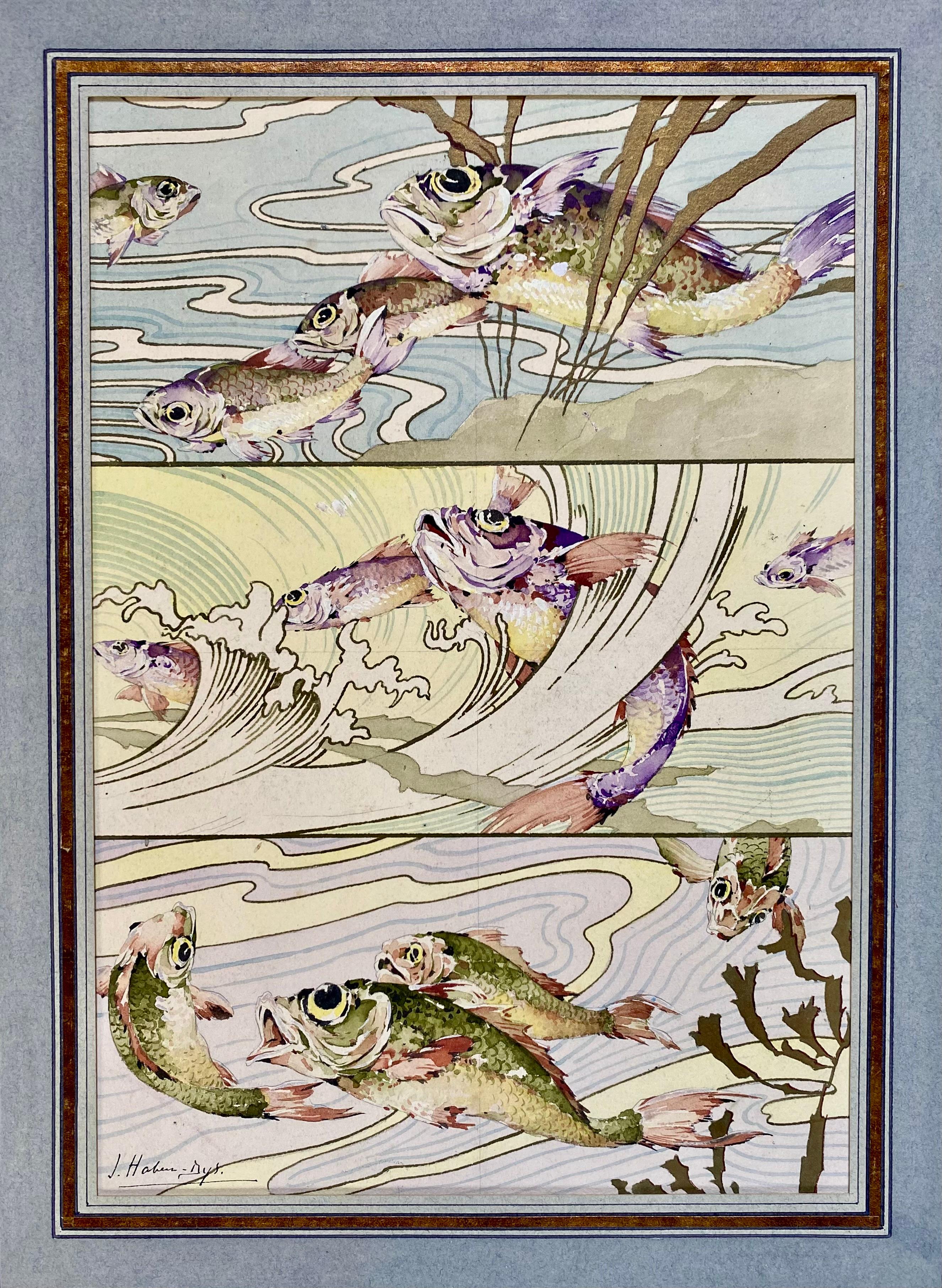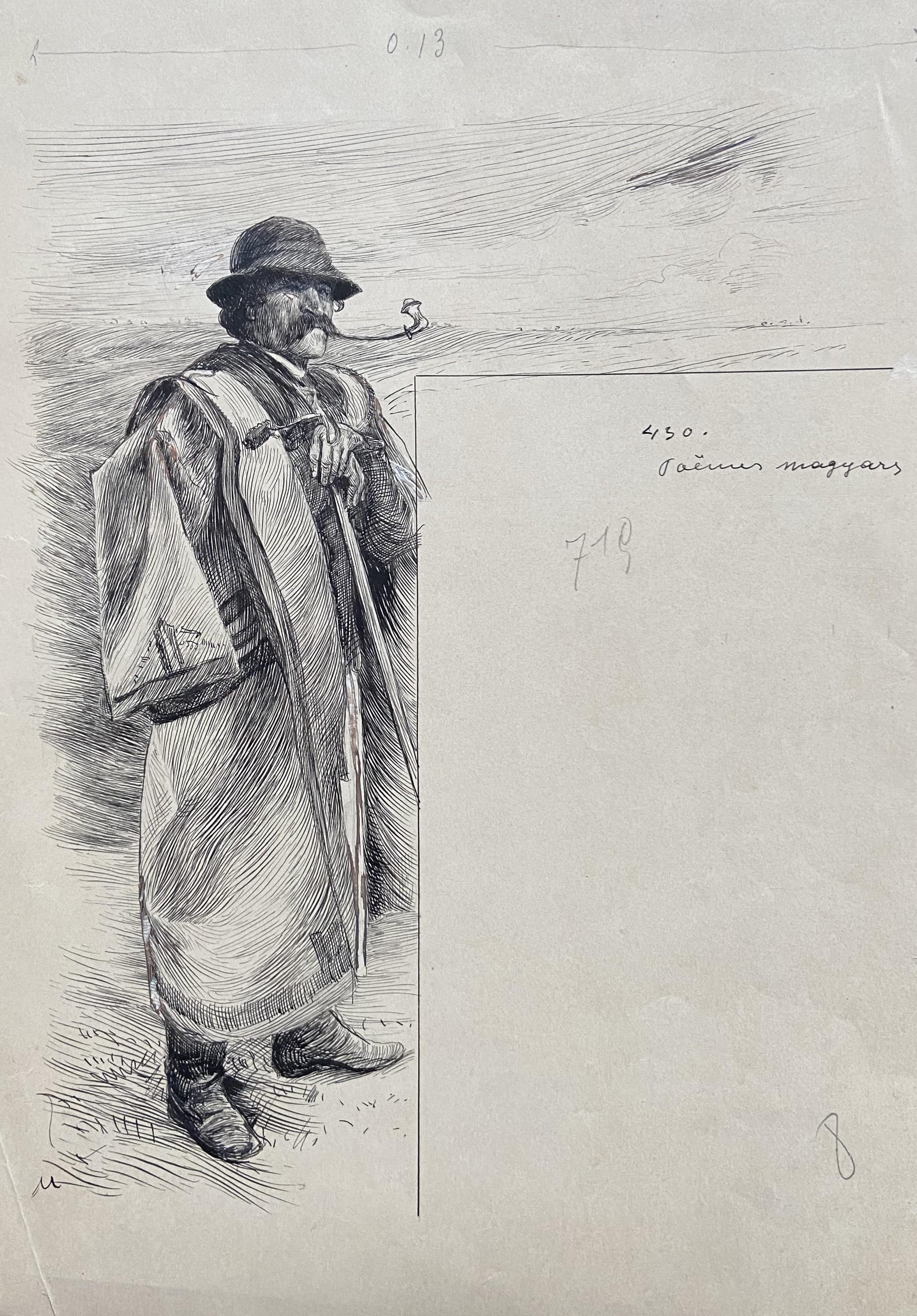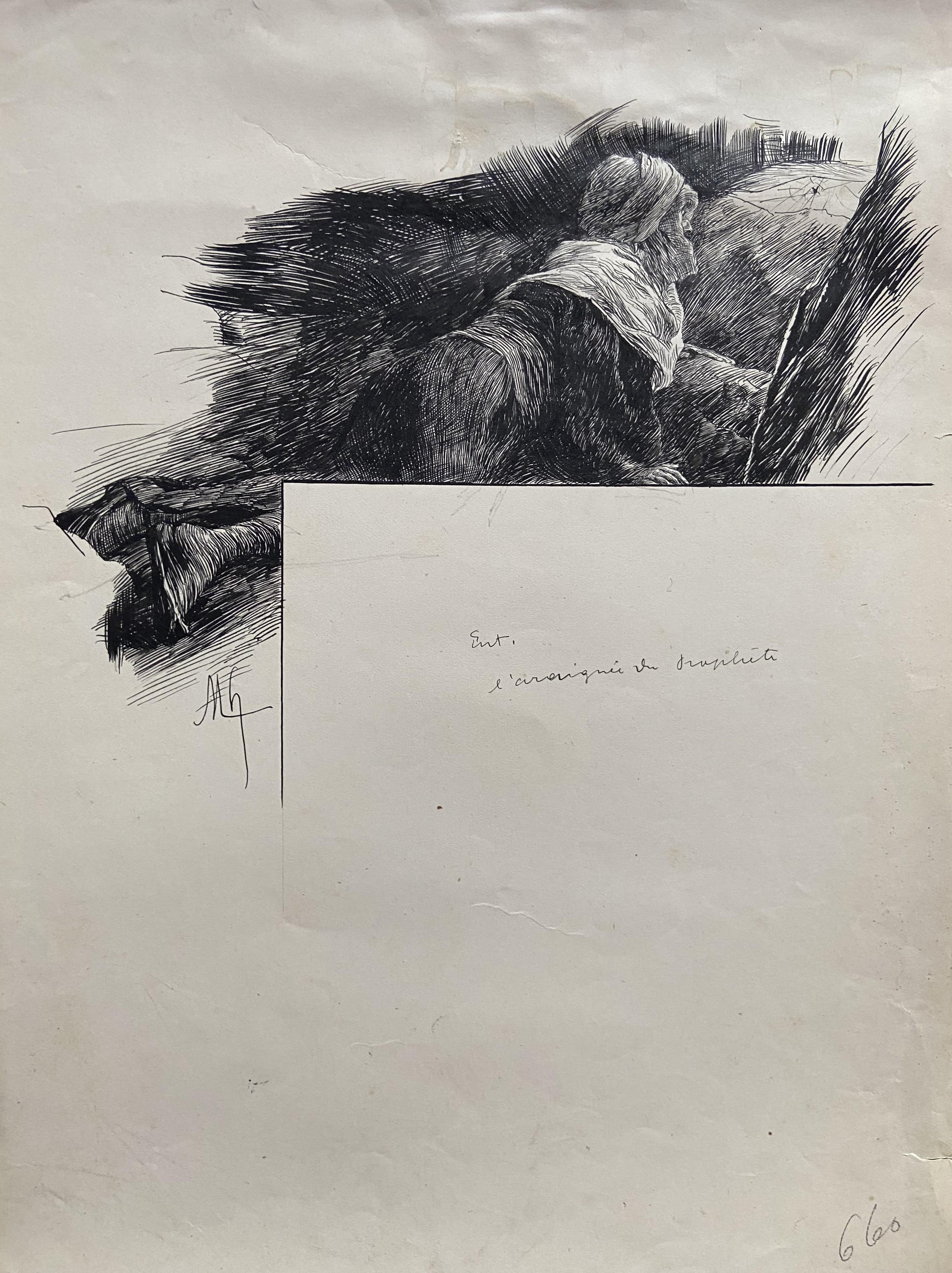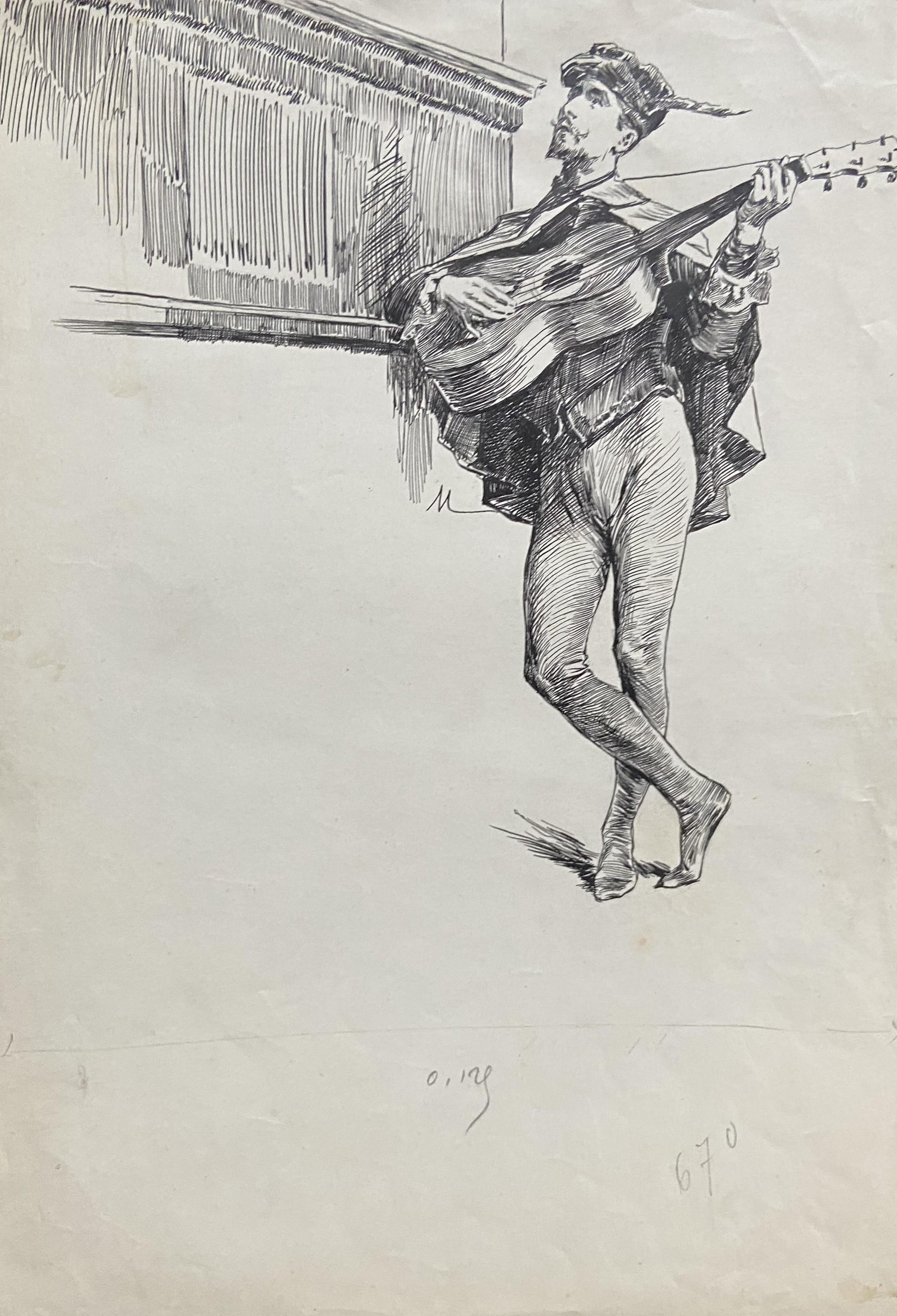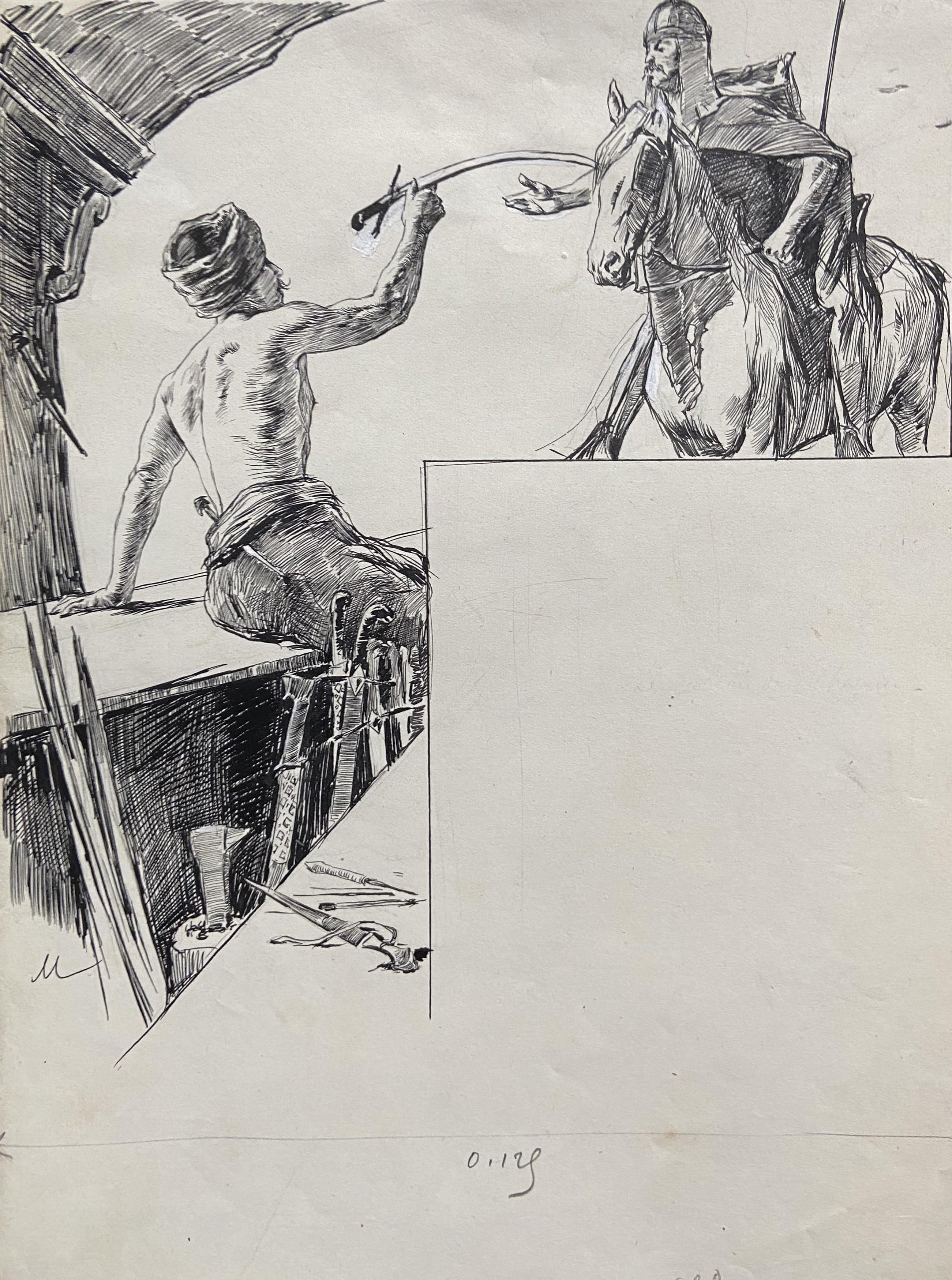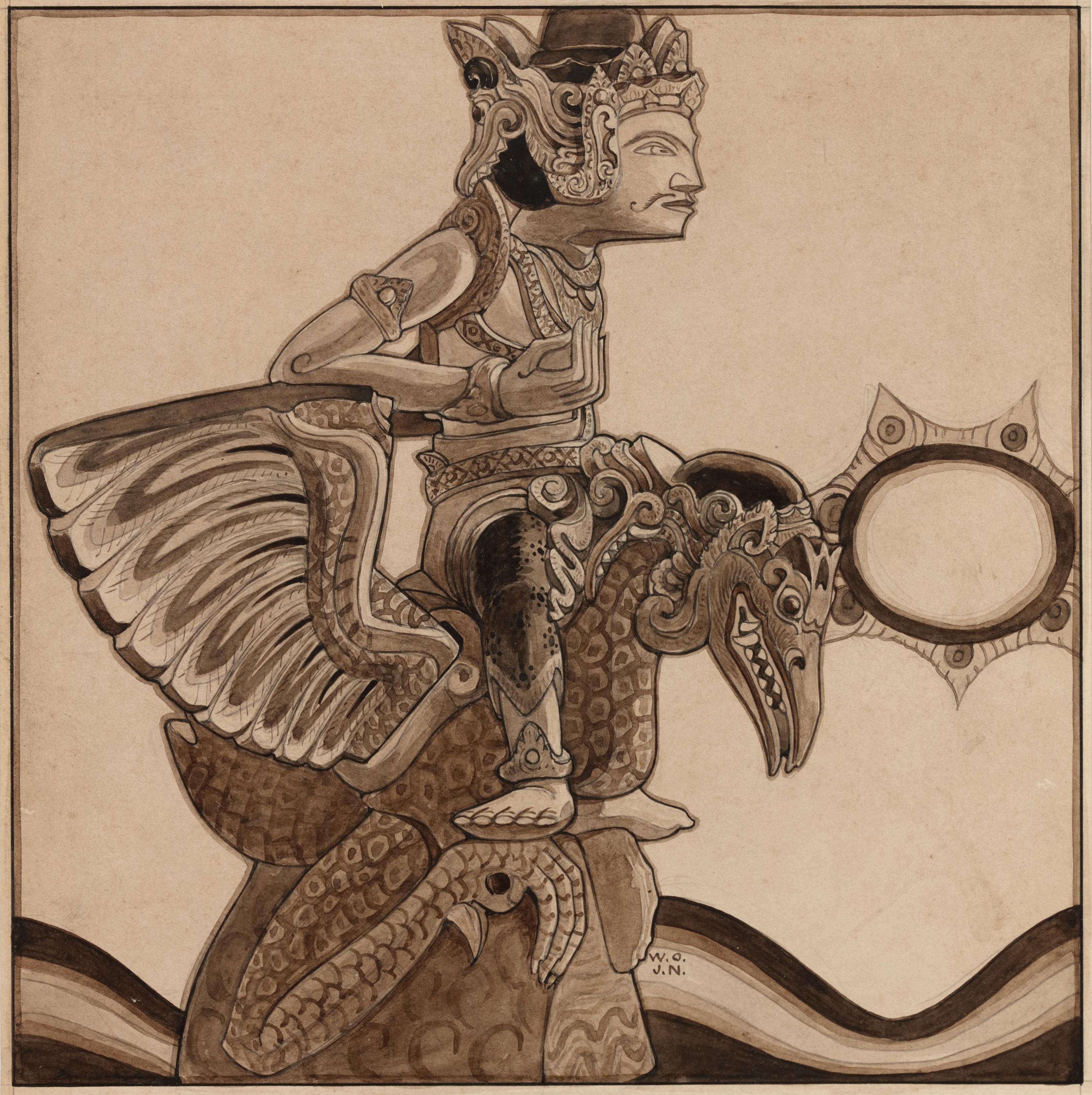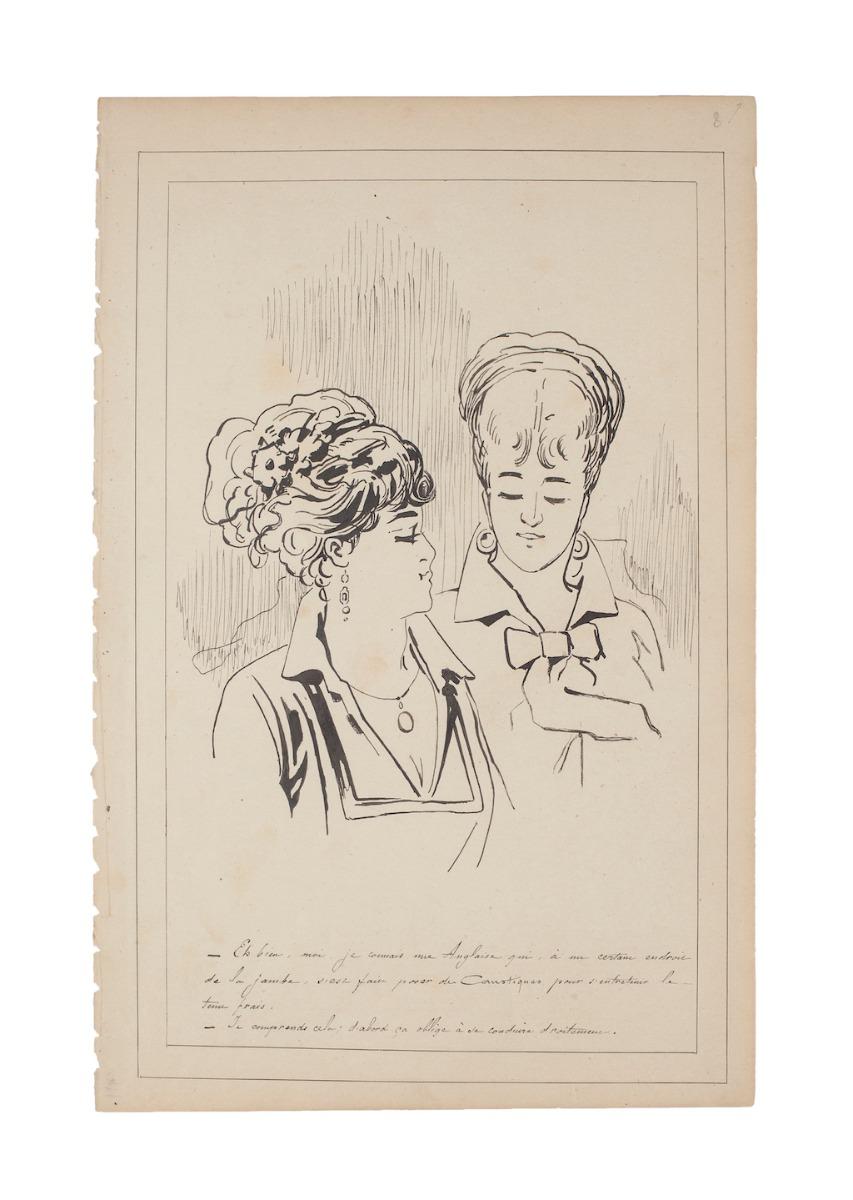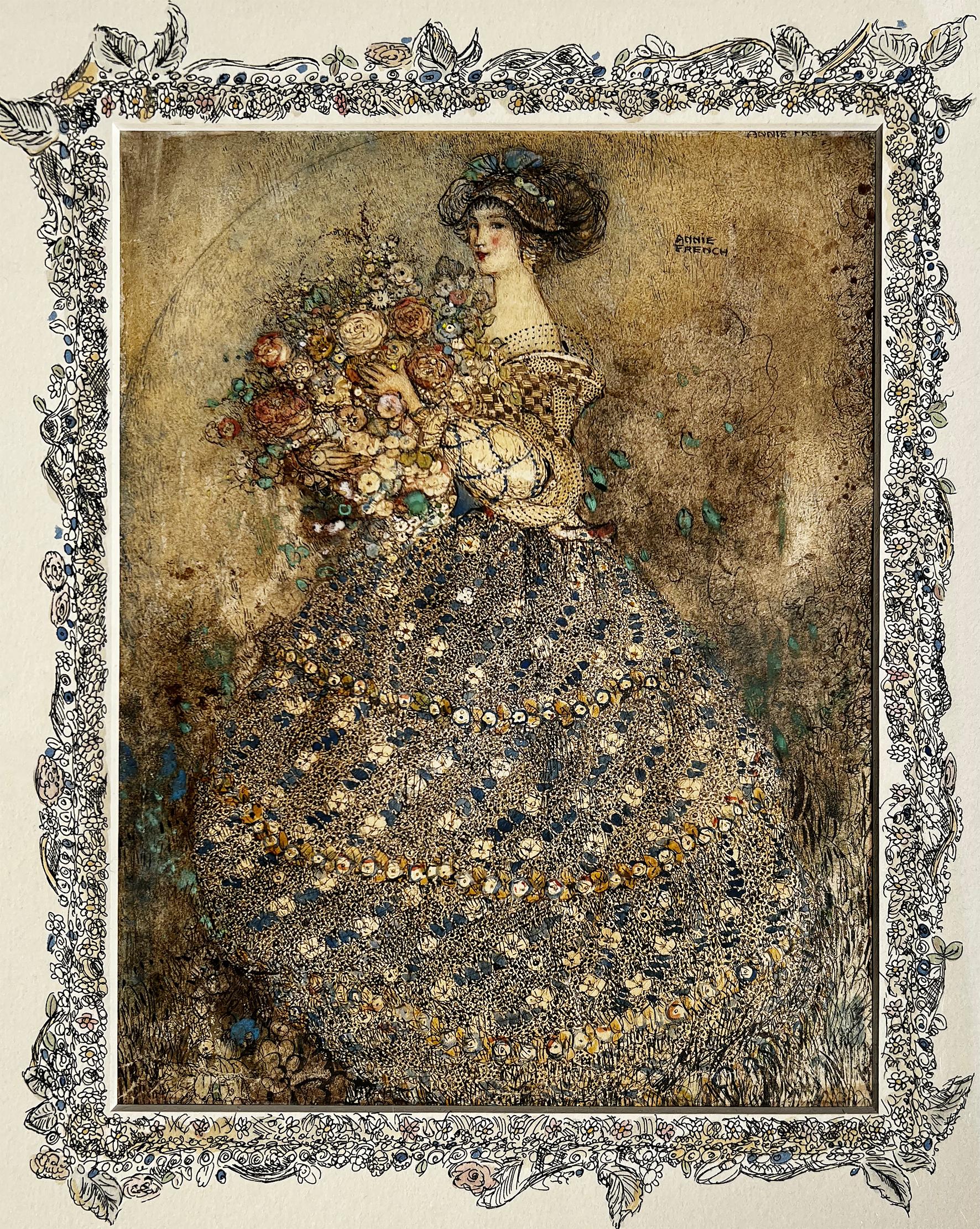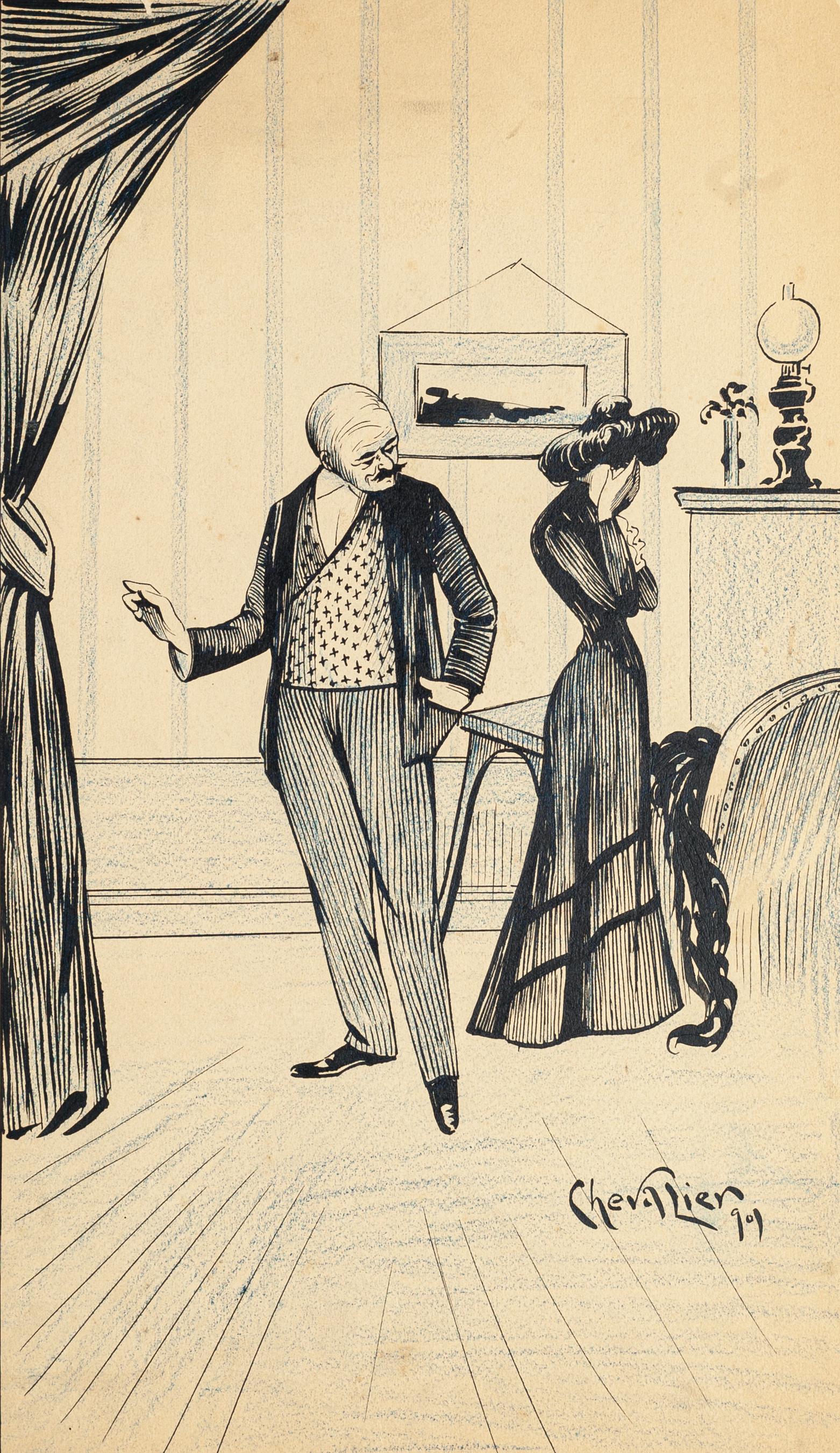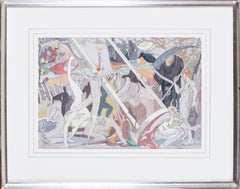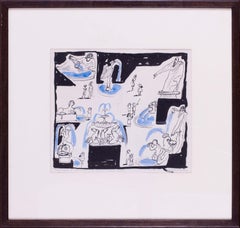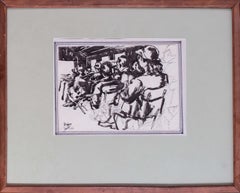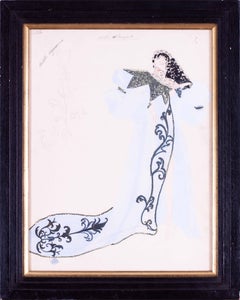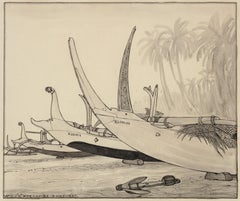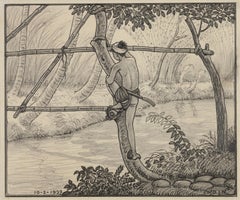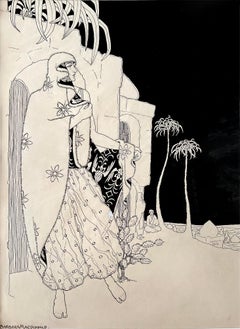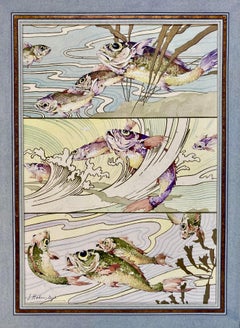
Pair of early 20th Century silhouette ink pictures of a procession of fairies
View Similar Items
Want more images or videos?
Request additional images or videos from the seller
1 of 10
Pair of early 20th Century silhouette ink pictures of a procession of fairies
About the Item
- Dimensions:Height: 7.25 in (18.42 cm)Width: 14.25 in (36.2 cm)Depth: 1 in (2.54 cm)
- Medium:
- Movement & Style:
- Circle Of:Arthur Rackham (1867, British)
- Period:
- Condition:Some dirt, small insect remnants and dust under the glass, unexamined out of the frames, some probable oxidisation of the paper though in perfectly decent order, a few stains to upper edges on close inspection, but in overall good order.
- Gallery Location:Petworth, GB
- Reference Number:1stDibs: LU540311516002
About the Seller
4.9
Gold Seller
Premium sellers maintaining a 4.3+ rating and 24-hour response times
Established in 2010
1stDibs seller since 2017
262 sales on 1stDibs
Typical response time: 2 hours
Authenticity Guarantee
In the unlikely event there’s an issue with an item’s authenticity, contact us within 1 year for a full refund. DetailsMoney-Back Guarantee
If your item is not as described, is damaged in transit, or does not arrive, contact us within 7 days for a full refund. Details24-Hour Cancellation
You have a 24-hour grace period in which to reconsider your purchase, with no questions asked.Vetted Professional Sellers
Our world-class sellers must adhere to strict standards for service and quality, maintaining the integrity of our listings.Price-Match Guarantee
If you find that a seller listed the same item for a lower price elsewhere, we’ll match it.Trusted Global Delivery
Our best-in-class carrier network provides specialized shipping options worldwide, including custom delivery.More From This Seller
View All'Bohemian Fantasy', British, 20th Century original painting
Located in Petworth, West Sussex
Circle of Austin Osman Spare (British, 1888 – 1956)
Bohemian Fantasy
Pen and gouache on paper
13.1/2 x 19.5/8 in. (34.3 x 50 cm.)
Category
20th Century Art Nouveau Figurative Drawings and Watercolors
Materials
Paper, Gouache, Pen
Edward Bawden design of the listener, ink on paper, British painter, illustrator
By Edward Bawden
Located in Petworth, West Sussex
An exceptional and rare example of Edward Bawden’s work in the field of graphic design, this original ink drawing was conceived as a proposed cover for The Listener magazine — a publ...
Category
20th Century Modern Figurative Drawings and Watercolors
Materials
Paper, Ink
Mid Century Modern British 'The Flicks' by British German illustrator Kapp
Located in Petworth, West Sussex
Edmond Xavier Kapp (British, 1890 – 1978)
The Flicks
Ink on paper
Signed and inscribed ‘Kapp The Flicks’ (Lower left)
8.3/8 x 12.7/8 in. (21.2 x 30.1 cm.)
Provenance: From the estate...
Category
Mid-20th Century Modern Figurative Drawings and Watercolors
Materials
Paper, Ink
Art Deco, 20th Century, fashion, dress design for 'Estelle'
Located in Petworth, West Sussex
Circle of Erte, Romain de Tirtoff (Russian / French 1892 – 1990)
A dress design for Estelle
Pencil, ink and watercolour on paper
Inscribed ‘Estelle’ (upper left) with other notations...
Category
20th Century Art Deco Figurative Drawings and Watercolors
Materials
Paper, Ink, Watercolor, Pencil
La Dame Queteuse
By Jean Cocteau
Located in Petworth, West Sussex
Jean Cocteau (French, 1889-1963)
La Dame Queteuse
Ink on paper
Signed, inscribed and dated `La Dame Queteuse Jean 1922’ (below)
10.1/4 x 7.7/8 in. (26 x 20 cm...
Category
Early 20th Century Surrealist Figurative Drawings and Watercolors
Materials
Paper, Ink
Jean Dupas art deco drawing, 'The Angel of light'
By Jean Dupas
Located in Petworth, West Sussex
Jean Dupas (French, 1882 – 1964)
The angel of light
Pen and ink and charcoal on paper
14.3/4 x 12.1/2 in. (37.5 x 31.8 cm.)
One of the leading artists of the Art Deco period, Jean Théodore Dupas was the son of a merchant marine captain and began his adult life as a merchant seaman. Poor health meant that he had to abandon this career and he enrolled in art school instead, first in his native Bordeaux and later in Paris. He won the Prix de Rome in the category of painting in 1910 and studied at the Académie de France in Rome, from where he sent several paintings to the Paris Salons, although his studies were interrupted by the outbreak of war. Dupas’s work came to public prominence on the occasion of the seminal Exposition des Arts Décoratifs in Paris in 1925. He was chosen by the furniture designer Jacques-Emile Ruhlmann to provide paintings for the latter’s Maison d’un collectionneur, alongside furniture by Ruhlmann and objects by many of the leading Art Deco craftsmen of the day, while other paintings by Dupas were also displayed to great effect elsewhere in the Exposition.
In the late 1920’s and 1930’s Dupas won a number of important and prestigious commissions. In 1926 he worked alongside Ruhlmann and the sculptor Alfred Jeanniot on the decoration of the tearoom of the ocean liner Ile-de-France; the first of the grand transatlantic ships to be built in France after the First World War. By this time Dupas had firmly established his reputation. Writing in 1927, his fellow artist George Barbier could already note that ‘Few artists have at such an early age attained such a degree of success, or gathered around them such swarms of imitators and disciples.’
Dupas reached the height of his fame in the mid 1930’s, and in 1934 he received his most important commission to date; a series of large glass murals...
Category
Early 20th Century Art Deco Figurative Drawings and Watercolors
Materials
Paper, Crayon, Ink, Pen
You May Also Like
Beach of Kusambe, Bali 1937
Located in Amsterdam, NL
Four outrigger proa’s on the beach of Kusambe, Bali, 1937
Signed with initials, dated and described with location bottom left
Pencil and ink on paper, 29.7 x 35 cm
In ebonized frame with white mount
WILLEM OTTO WIJNAND NIEUWENKAMP
(1874-1950)
Nieuwenkamp was born on July 27th 1874 in Amsterdam. His father owned sailing ships sailing to Indonesia and hearing the stories of the returning captains evoked in the young Nieuwenkamp an obsession for distant lands and adventure. After a failed attempt by his father to have his son make a career in his business, Nieuwenkamp attended the Academy for Decorative Art in Amsterdam. However, he left within one year to go his own way.
He was an autodidact and a great experimenter with new techniques, particularly in the art of etching. Nieuwenkamp was a very focused man with the discipline of a scientist tempered by the sensitivity of an artist, a lust for adventure, a natural appreciation for ethnic arts and an enormous ambition to tread new paths.
In 1898 he visited Indonesia for the first time and on his second visit in 1903-1904 he went on to Bali and became the first foreign artist to love Bali and the Balinese with a passion. Having secured agreements with several museums in the Netherlands to obtain Balinese art and objects for their collections, Nieuwenkamp immediately started to purchase and order a wide range of ethnographic art and objects from local artists and craftsmen.
Through his drawings and books, he gave an excellent impression of Balinese art and culture at that time. Since 1854 Northern Bali was under Dutch...
Category
1930s Art Nouveau Landscape Drawings and Watercolors
Materials
Paper, India Ink, Pencil
Wobbly bridge, Tabanan, Bali, 1937
Located in Amsterdam, NL
Wobbly bridge, Tabanan, Bali, 1937
Signed with initials bottom right and dated, bottom left
Pencil and ink on paper, 22 x 26.3 cm
In ebonized frame with white mount
Willem Otto Wi...
Category
1930s Art Nouveau Landscape Drawings and Watercolors
Materials
Paper, India Ink, Pencil
'Princess Herminie and the Tapestry Prince - Female Illustrator
Located in Miami, FL
An original pen and ink by Barbara Macdonald 1892-1969, that was published on page 70 of the 1922 book, 'Princess Herminie and the Tapestry Prince,' written by Lee Ivatt. The second ...
Category
1920s Art Nouveau Figurative Drawings and Watercolors
Materials
Ink, Pen
Fantaisies Aquatiques
Located in PARIS, FR
Jules Habert Dys (1850-1930)
Aquatic fantasies
Around 1885
Watercolor and ink on paper, heightened with "gold" gouache
27 x 20 cm
Signed lower left J. Habert-Dys
Bibliography: Decor...
Category
1880s Art Nouveau Figurative Drawings and Watercolors
Materials
Ink, Watercolor, Gouache
Felician Myrbach (1853-1940) Pour Guitare solo, original drawing
By Felician Myrbach
Located in Paris, FR
Felician Myrbach (1853-1940)
Pour Guitare solo, For Solo Guitar
bears the monogram "M" in the middle left, titled in lower left
Ink on paper
29,8 x 18,8 cm
in good condition, traces...
Category
1890s Art Nouveau Figurative Drawings and Watercolors
Materials
Ink
Felician Myrbach (1853-1940) Poèmes magyars
By Felician Myrbach
Located in Paris, FR
Felician Myrbach (1853-1940)
Poèmes magyars, Magyar poems
bears the monogram "M" on the lower left, titled in the upper right
Ink on paper
29,8 x 19,8 cm
in good condition, the sheet is slightly yellowed
In a modern frame : 33 x 23 cm
This is an illustration project by Felician Myrbach for François Coppée's work, "Poèmes magyars". He leaves the space to be occupied by the text blank on the sheet and arranges his composition accordingly. It is interesting to see the artist imagine his drawing with this constraint.
Felician Myrbach (also Felicien de Myrbach, Felician von Myrbach, from 1919 Freiherr von Rheinfeld) was born on 9 February 1853 in Zalishchyky, he died 14 January 1940 in Klagenfurt
He was an Austrian painter, graphic designer and illustrator. He was a founding member of the Vienna Secession and the director of the Applied Arts School in Vienna (now the University of Applied Arts Vienna), and was instrumental in the creation of the Wiener Werkstätte.
Myrbach's father was Franz Myrbach (1818–1882), the Administrator of Bukovina in 1865–70. His older brother Franz Xaver (1850–1919) was an economist and professor at the University of Innsbruck. He attended the Theresian Military Academy in 1868–71, graduating as a Leutnant, then at the Academy of Fine Arts, Vienna under August Eisenmenger. In 1875, he joined the 19th Feldjäger Battalion, and in 1877 became an Oberleutnant in the Military Geographic Institute, then, after campaigning in Bosnia in 1878, he taught drawing at the Infantry Cadet School in Vienna. He continued his artistic studies under C R Huber. In 1881, he went on military leave and moved to Paris, retiring totally from the military in 1884 as a Hauptmann, 2nd Class. He stayed in Paris until 1897, working as an illustrator, including illustrating the works of Alphonse Daudet, Victor Hugo and Jules Verne.
Myrbach was a founding member of the Vienna Secession in 1897. In the same year, he became the a professor of the Applied Arts School at the Museum of Art and Industry; Arthur von Scala, another reformer Modernist, was made head of the Museum. In 1889, Myrbach became the director of the school. He brought an enthusiastic Modernist attitude and encouraged an integration between art, design and production. He added Koloman Moser and Josef Hoffmann to the staff, amongst other Secession artists. This would lead to the foundation of the Wiener Werkstätte in 1903. Myrbach leant more towards an aesthetic approach than von Scala, but both worked together to bring about their combined vision of successful, popular Austrian applied art. Myrbach was a voice for reform towards Modernist ideals in the School, which was started 1899 with the support of Alfred Roller, and completed by 1901.The reform of the school has been described as his "lasting merit".
Ludwig Hevesi called Myrbach "probably the best [illustrator] in Vienna", partially for his work (with Moser) in the Secession magazine Ver Sacrum.
Myrbach visited America on a state-funded study trip in 1904, part of which was to represent the Applied Arts School at the 1904 World...
Category
Early 1900s Art Nouveau Figurative Drawings and Watercolors
Materials
Ink
